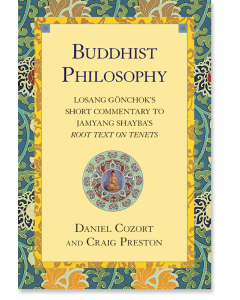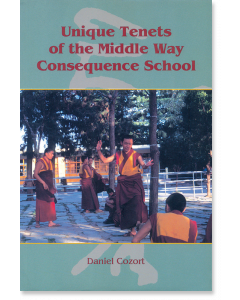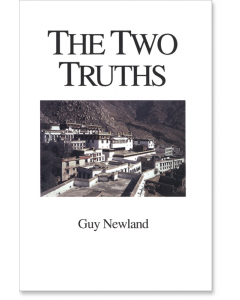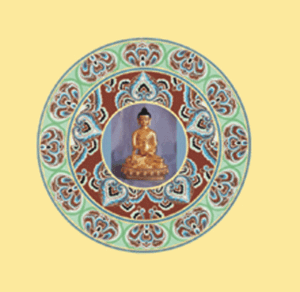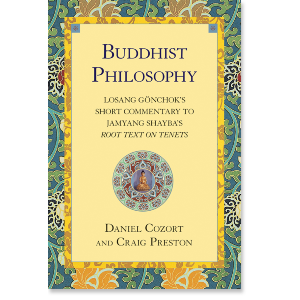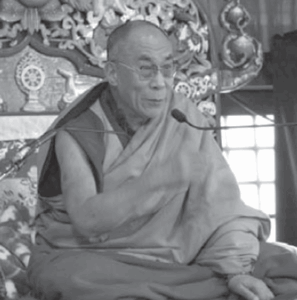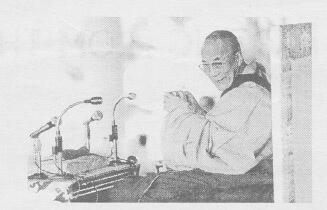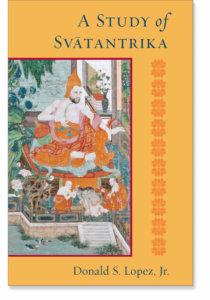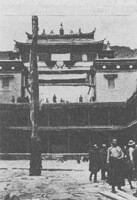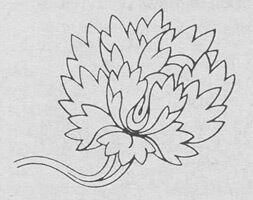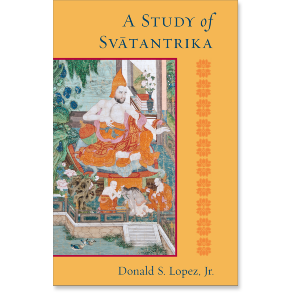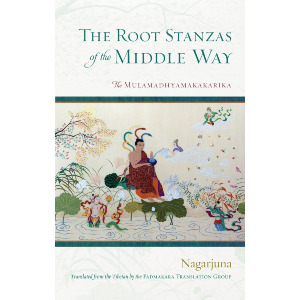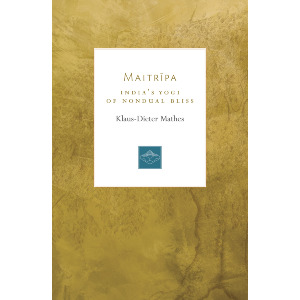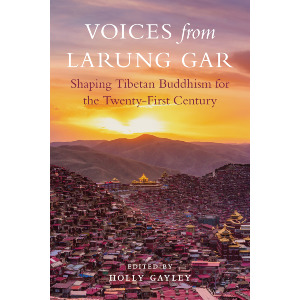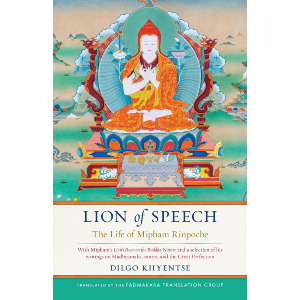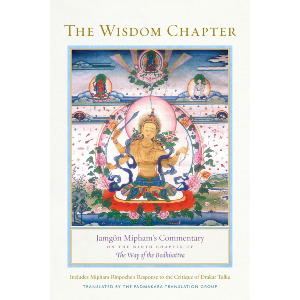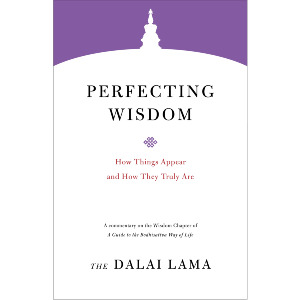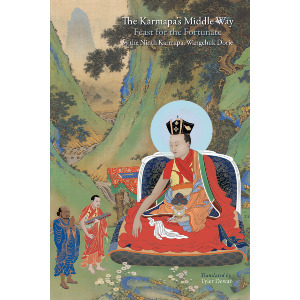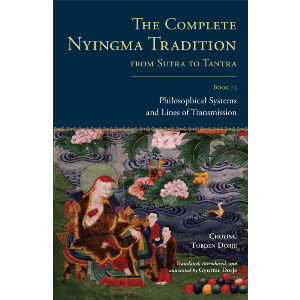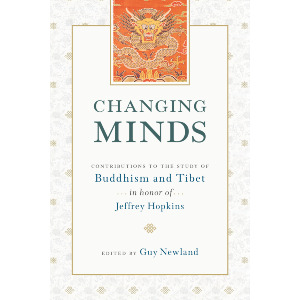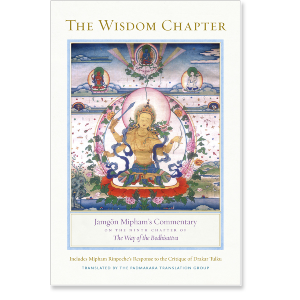| The following article is from the Autumn, 2003 issue of the Snow Lion Newsletter and is for historical reference only. You can see this in context of the original newsletter here. |
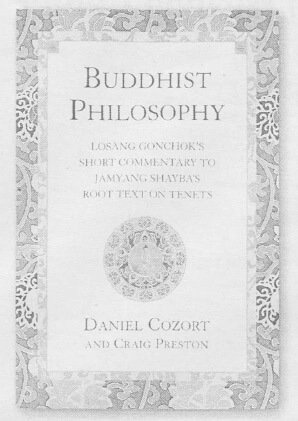
What are the most important points of difference between the major schools of Buddhist philosophy? This rich, medium-length survey offers a lively answer. The introduction, aimed at those new to Buddhist thought, sets up a dialogue between the schools on the most controversial topics in Buddhist philosophy.
Jamyang Shayba was the greatest Tibetan writer on philosophical tenets. Losang Gonchok's Clear Crystal Mirror, a concise commentary on Jamyang Shayba's root text, represents a distillation of many centuries of Indian and Tibetan scholarship. Buddhist Philosophy skims the cream of Jamyang Shayba's intellect, providing a rare opportunity to sharpen our intellect and expand our view of Buddhist thought. Daniel Cozort is associate professor and chair of the Department of Religion at Dickinson College where he teaches the religions of India. He is the author of Highest Yoga Tantra. Craig Preston studied at the University of Virginia and has taught Classical Tibetan at Namgyal Institute. He is author of How to Read Classical Tibetan, Vol. 1: A Summary of the General Path and currently teaches Tibetan and Buddhist philosophy privately in Ithaca, New York.
The following is an excerpt from Buddhist Philosophy.
Nirvana With and Without Remainder
Nirvana is neither a place nor a mental state. It is a fact about us. A nirvana is the absence of afflictions in someone whose cultivation of wisdom has resulted in the destruction of ignorance, desire, hatred, etc. That mere absence is the nirvana.
On that, all Buddhist schools agree. However, they disagree over the use of the term remainder used in conjunction with nirvana. Other than Prasangika, it is said that after a person attains nirvana, he or she subsequently can be said to have a nirvana with remainder, the remainder being the body and mind. Death cuts the remainder. However, the nirvana without remainder is a single moment, occurring just at the time of death but not after. After death there is no person to whom the nirvana can belong!
Hinayana schools do not recognize any existence after death for an Arhat. The Mahayana schools do, and all except Asanga's say that Arhats manifest in different forms, no longer helplessly reborn according to karma, and continue to cultivate wisdom and merit until they have become Buddhas. Because Asanga and his followers say that there are Arhats who do not go on to Buddhahood, they must explain that those Arhats are born in the pure lands of Buddhas and abide there forever in meditative absorption.
The Prasangika school uses the term remainder in a completely different manner. For them, remainder has to do with whether or not to an Arhat things still appear to have true existence. To explain this, we have to recall what was said previously about the obstructions to liberation and obstructions to omniscience. What prevents our liberation is our conceptions of inherent existence. Things appear to us as though they exist from their own side, independently, and we assent to this appearance by conceiving of them in this way. Meditation that analyzes the way things exist will destroy this false conception, and we can be liberated from it and from the samsara it causes.

...when does a nirvana without remainder occur? It occurs only when that person is meditating on emptiness because at that time only emptiness appears to the mind.
However, because of the way we have been conditioned, which in Buddhism is a process without beginning, things still appear to exist inherently. The liberated person is someone who no longer assents to this appearance, who is always doubtful of the evidence of the senses and resists conceiving of them in the wrong way. He or she is like someone who wears sunglasses, well aware that the green tint pervading all visible objects is just the effect of the lenses. It takes a very long time for the appearance of inherent existence itself to fade. Those taints of appearances are the obstructions to omniscience.
From this perspective, then, an Arhat experiences a nirvana with remainder most of the time, since most of the time things appear falsely. But then, when does a nirvana without remainder occur? It occurs only when that person is meditating on emptiness because at that time only emptiness appears to the mind. For nonBuddhas, it is impossible for both emptiness and other tilings to appear to the mind simultaneously. (Another way of putting this is to say that the two truths cannot appear simultaneously to a non-Buddha's mind.)
So, both Prasangikas and others could identify an Arhat's usual state, the time when he or she is not absorbed in meditation on emptiness, as a nirvana with remainder, but they would mean very different things by it. Prasangikas would mean that things falsely appear to the mind; others would mean that the Arhat is alive. Similarly, both Prasangikas and others would identify the nirvana of an Arhat at the time of death as being a nirvana without remainder but they would mean something different by it. Prasangikas would mean that at that time there is no false appearance to the mind (because, for a short time, only a vacuity appears to the mind), whereas others would mean that the body and mind are abandoned.
Other than the purpose of again pressing home their contention about the empty nature of things, why do Prasanigikas change this terminology? Jamyang Shayba here gives two arguments. First, it makes no sense to say that there is any person who experiences a nirvana without remainder if that means that the aggregates are abandoned. There is no person once the aggregates are destroyed. Second, the language that suggests that Arhats "extinguish" their aggregates really just refers to their emptiness. Like all things, our bodies and minds are "primordially extinguished" into emptiness because they are, and always have been, empty of inherent existence.

